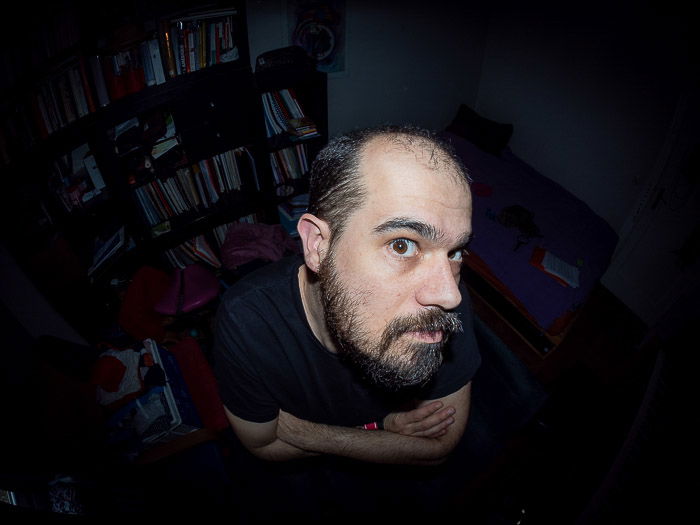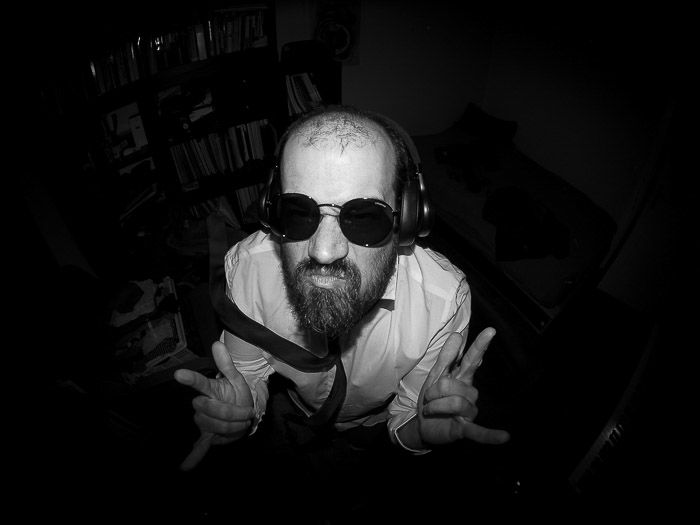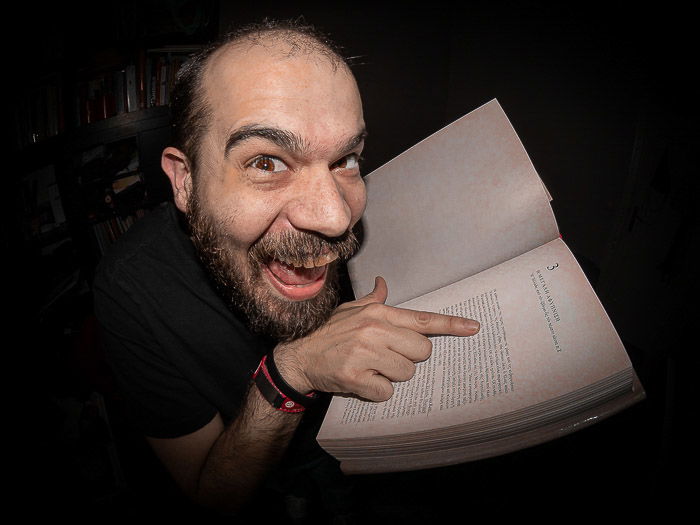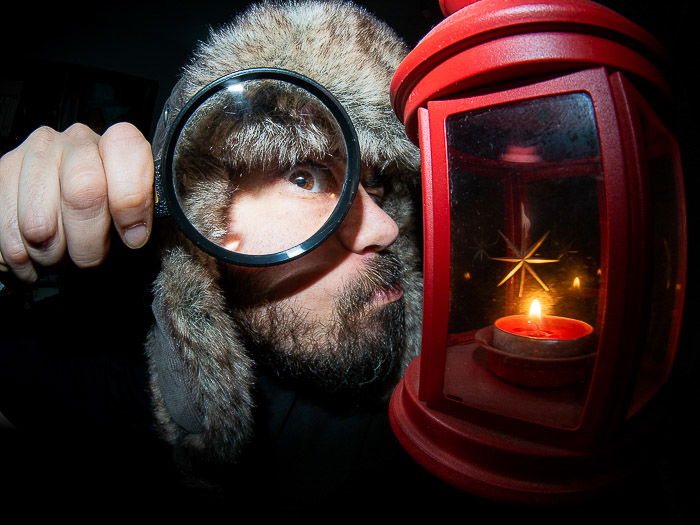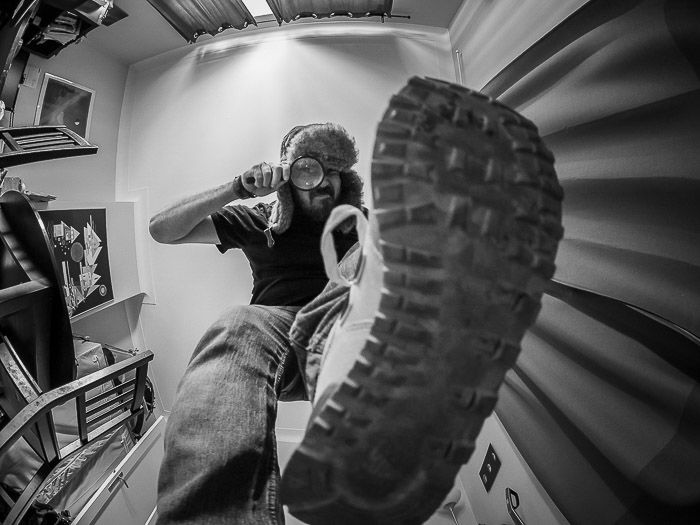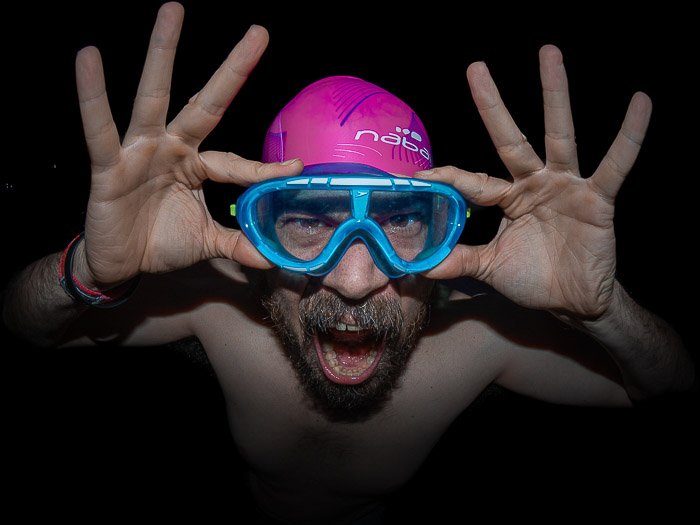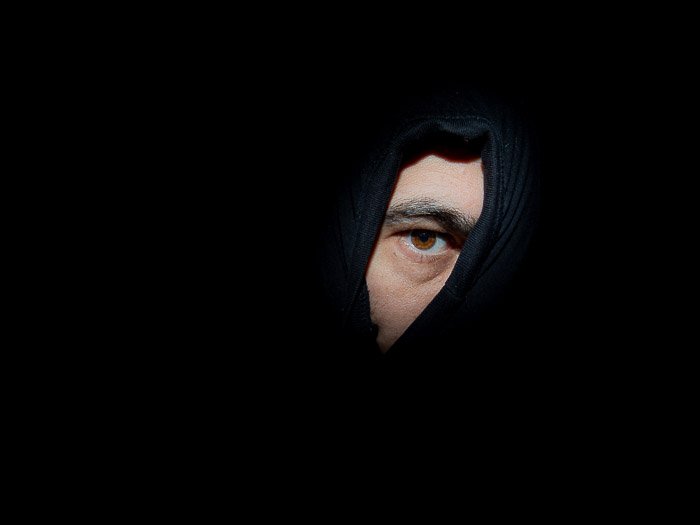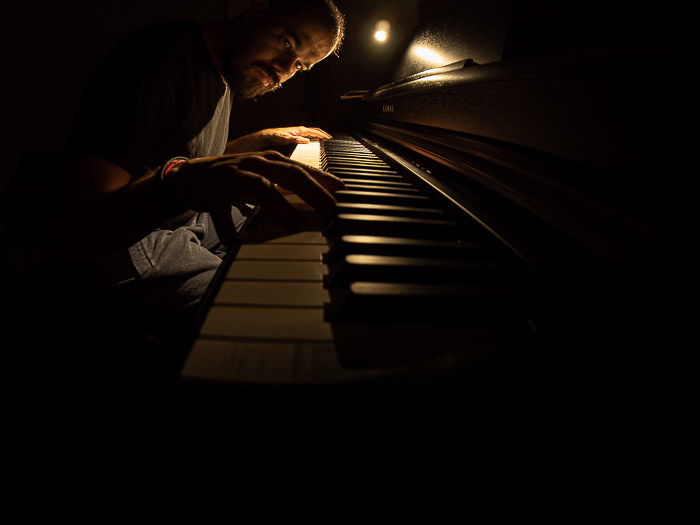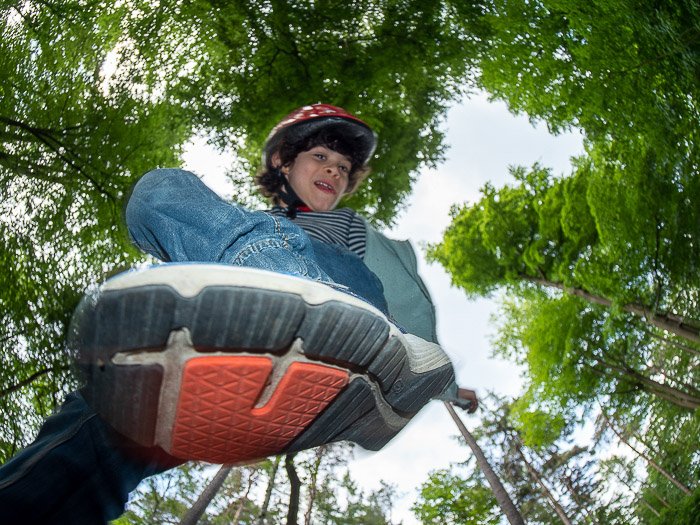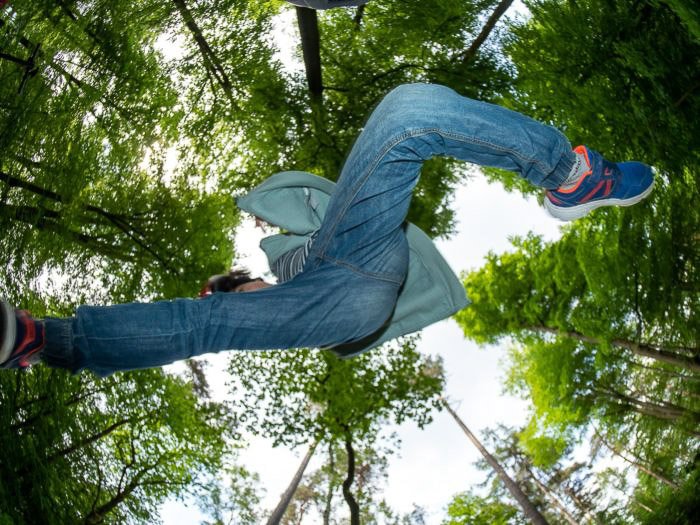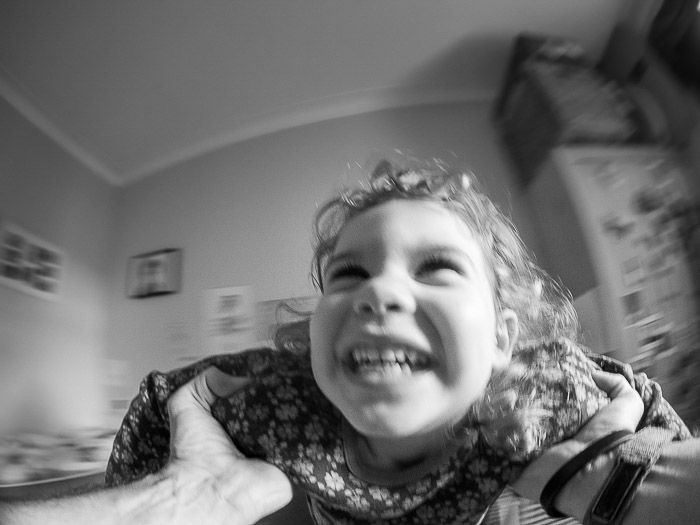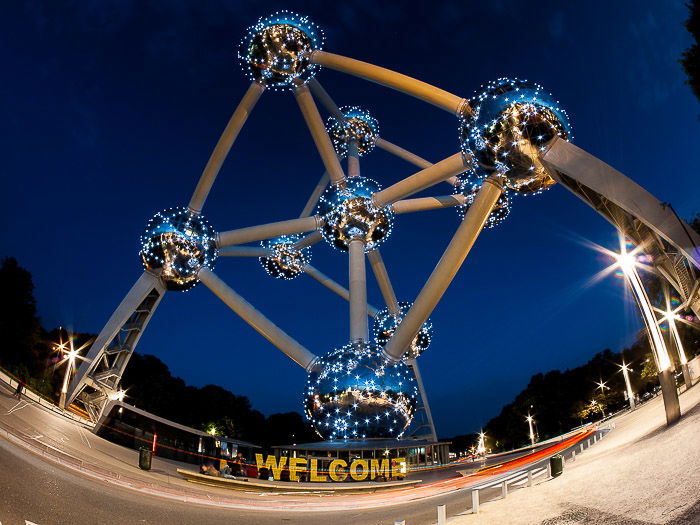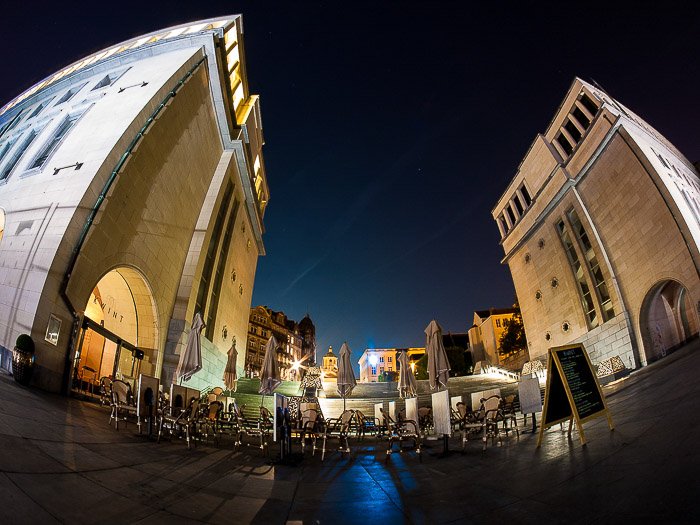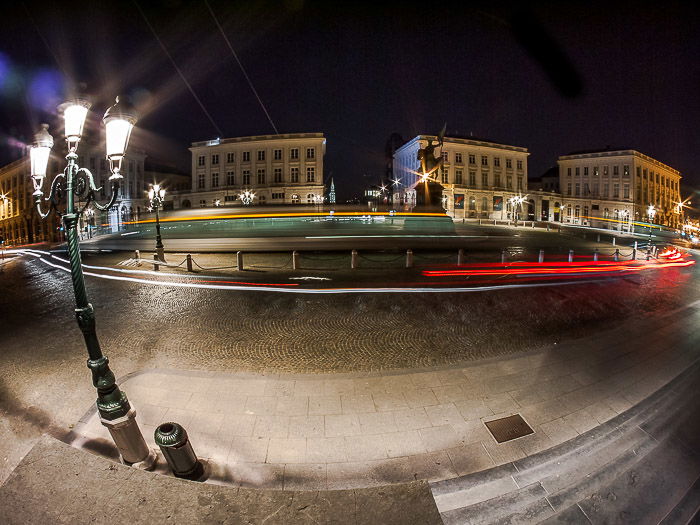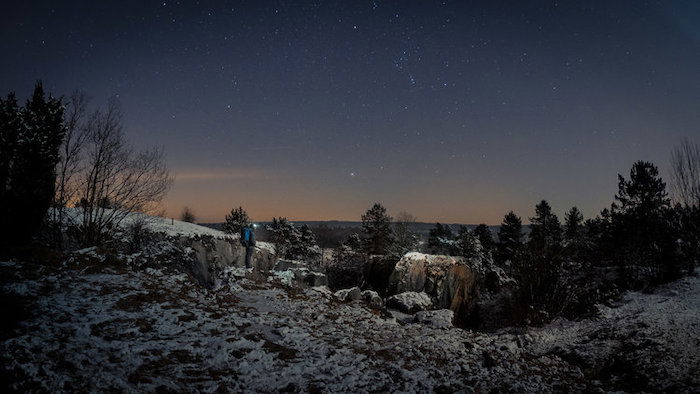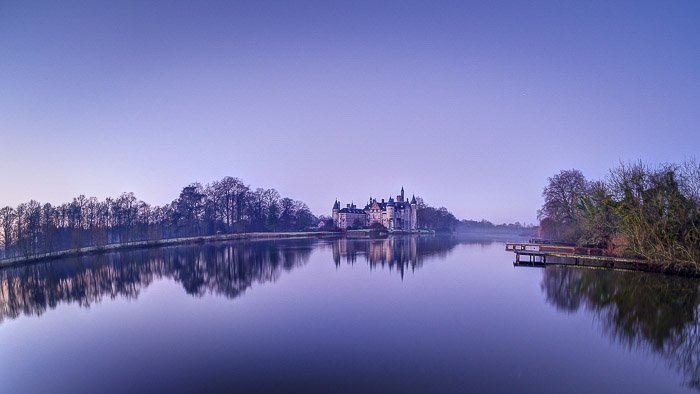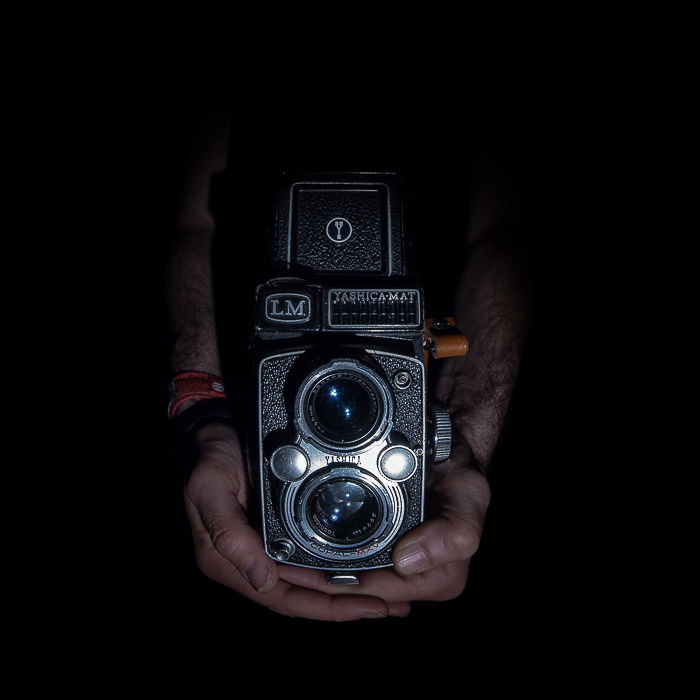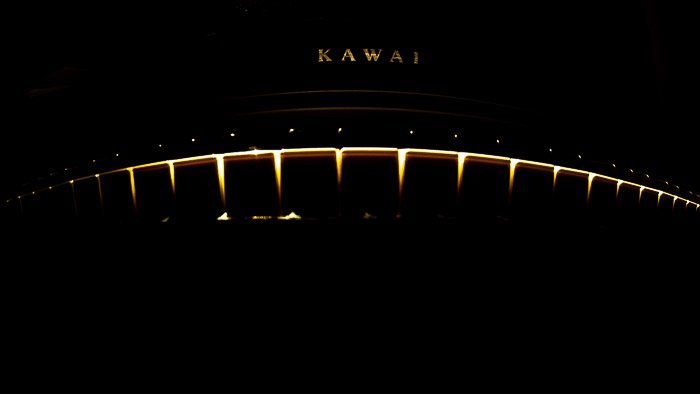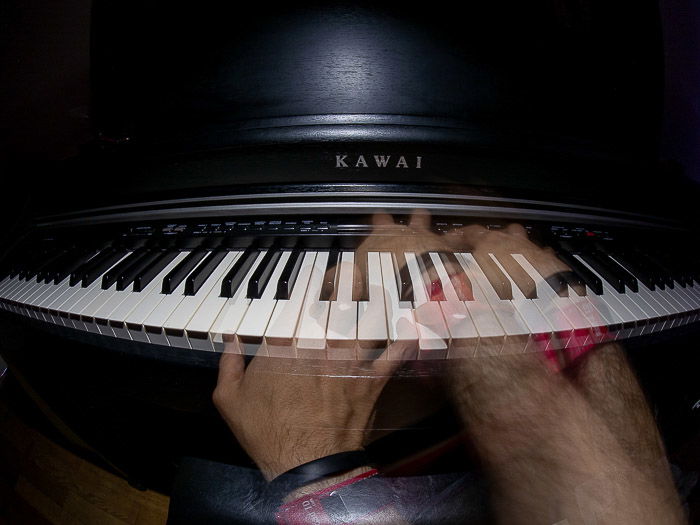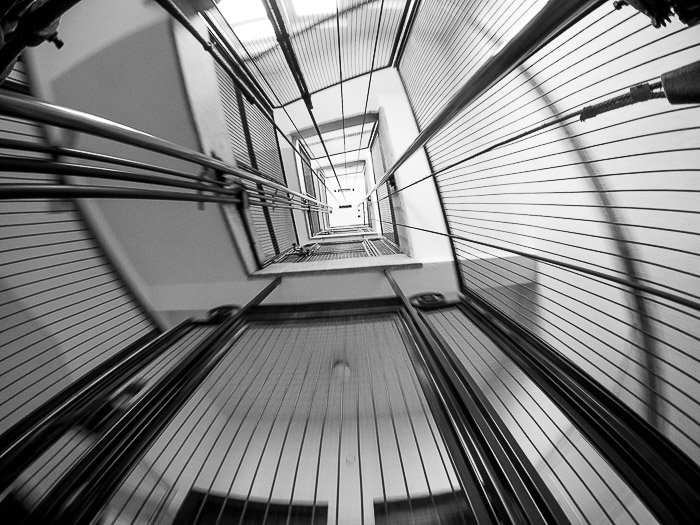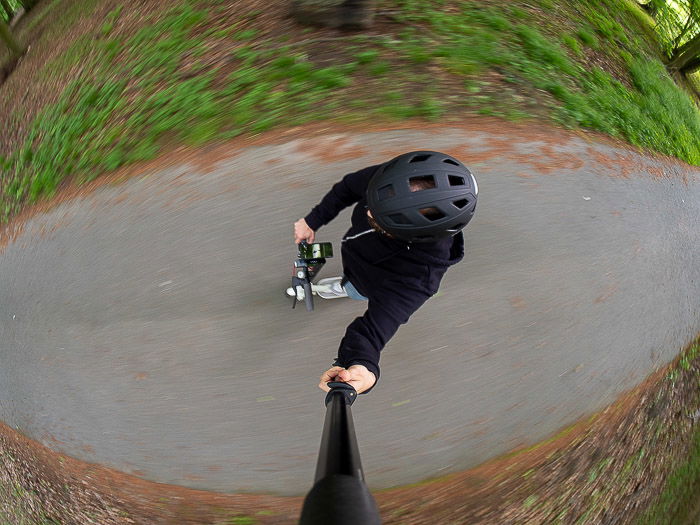Many photographers consider fisheyes to be toy lenses, only good for some funny snapshot. In reality, it is easy to create cool fisheye photos that aren’t just for fun. If you’re not convinced, these 20+ striking examples of fisheye photography will change your mind.
1. Fisheye Photos: Go Beyond The Classic Shot With Portraiture
One of the classic fisheye shots is a portrait from above. Because of the lens distortions, what you get is a person with a large head and tiny feet.
With the camera above my head, I look like a giant trapped in a tiny room. But, other than that, there is nothing really interesting going on. All there is are the fisheye lens distortions. Can we be more creative?
Try the same setup, but add a few accessories to put the image in a clear context. By adopting a less static pose, you can create a much stronger portrait. I used the headphones, sunglasses, the flying tie, and ‘musical’ expression to place the shot into an easily identifiable context. The messy library you can see behind me helps convey a funny feeling of a guy going nuts in the privacy of his little room.
2. Interesting Portraits With Fisheye Lens Distortions
The key to interesting fisheye portraits is to play with the distortions. Use them to your advantage.
By getting close to the lens, my head, hand and the book got so large they fill the frame. A creepy facial expression and strong edit give the feeling of something evil ‘cooking’ here. Again, the visible library behind me helps to put the shot in context. When you use a fisheye lens, you soon realise that you can control the lens distortions playing with the distance between camera and subject. To exaggerate them, simply go closer to the lens. If you cannot go closer but you still want to have distortions, a magnifying glass is a perfect prop to use.
3. Fisheye Portraiture With A More Natural Look
To minimise the strength of the fisheye distortion in your portraiture, you have to put some distance between you and your model. Ten centimeters will make a huge difference. This way you can create a portrait with more natural proportions.
Despite the distance, a certain amount of unusual and weird proportions will remain visible. It is natural to ‘hide them’ by making your model act funny to create a crazy looking portrait. Nothing is stopping you from using this lens to create more serious images either.
4. Environmental Portraiture With A Fisheye
Because of their wide field of view, fisheye lenses are perfect to take environmental portraits in tight spaces. They are also usually rather fast (i.e., they have relatively large aperture). You can use fisheyes to capture portraits in low light conditions. In the image below, the fisheye effect is clearly visible on the piano keyboard and my right hand. My face is not distorted noticeably, as it is farther from the lens. This perspective creates a rather dynamic image.
5. From Nightmare to Dream: Kids Photography Made Easy With A Fisheye
Who does not know the struggle of getting in-focus images when photographing kids while running and jumping all around? If you have this problem, a fisheye lens can help. Everything farther than 50cm or so is, in fact, basically at the infinite. This makes all kinds of fisheye lenses, even the cheaper manual ones, perfect to capture your kids in actions. Set the lens to focus at the infinite and concentrate on your photography.
Fisheye lenses have very short focus distance. You can focus on things as close as 10 cm or so, which is a must if you to capture very close action. For the shot below, I had my camera strapped on my torso while spinning around with my daughter.
6. Outstanding Architecture Photography With A Fisheye
The extremely wide field of view of fisheye lenses makes them the perfect lens for shooting tall buildings and monuments. The key is to frame the shot so to take advantage of the distorted effect the lens causes on your target. Also, the huge depth of field of the fisheye allows you to get all of the building in perfect focus.
This is one of the most famous landmarks in Brussels and in all Europe: The Atomium. This representation of an iron crystal is over 100 meters tall. With a fisheye, I could frame it all from just less than 20 meters away.
Since fisheye distortions are stronger around the edges of the frame, I photographed the two tall buildings in the image above up close and from a central position. By composing so that the buildings are close to the edges, they get so distorted that they resemble tidal waves on the verge of breaking over the square below.
Light trails are an evergreen of urban night photography. With a fisheye, you can get even more creative. Its field of view, in fact, is so wide that you can frame a whole roundabout to create light trails carousels from the passing traffic.
7. Get Creative With Landscape Fisheye Photography
Fisheye lenses can be used to replace wide angles in landscape photography, especially if you do not want to use filters and you know how to deal with the distortions. They allow capturing a wider scene without the need to do panorama stitching. If the scene is far, you can have minimal distortion, particularly if you place the horizon near the middle of the frame.
By tilting the lens up or down you can distort the horizon, so to create particular effects, as in the images below.
8. Have Fun And Experiment
With a fisheye lens, you have endless photographic possibilities and the limit is your creativity. If you are in a photographic rut, using a fisheye is a great way to find your motivation back. Don’t be afraid to experiment with photographic techniques and targets. Take advantage of fisheye distortions, wide field of view and close focus capabilities.
Conclusion
Fisheye lenses give images so weird that people either love them or hate them. But get to know them, and you will find those lenses are a fantastic photographic tool to spark everyone creativity. And if you want to know more about fisheyes, here is a more in-depth guide to help you master your fisheye photography.


